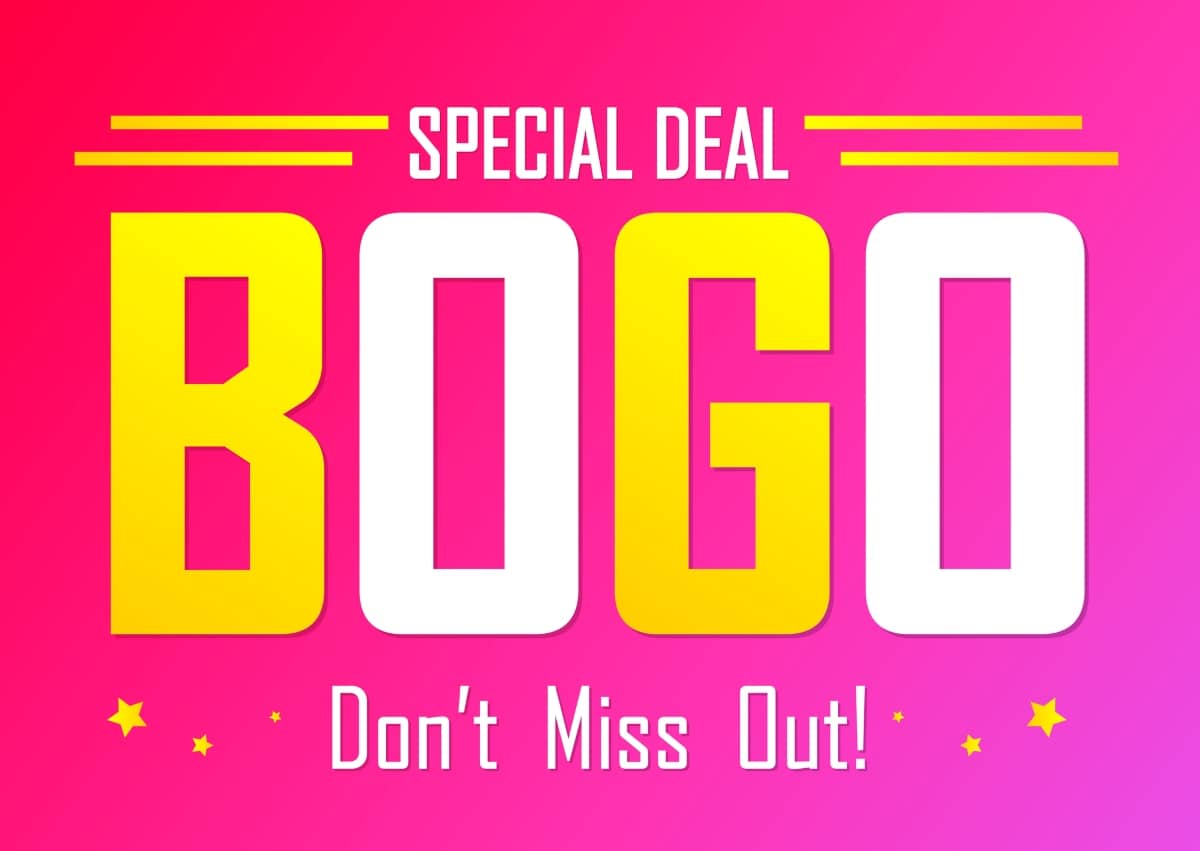22 eCommerce Marketing Strategies to Boost Sales in 2025!
An effective eCommerce marketing strategy is vital to compete in a marketplace with 4.9 trillion U.S. dollars worldwide.
And what does the future of eCommerce look like?
A projected growth rate of 50% over the next four years — equating to a staggering 7.4 trillion dollars by 2025.
If you’re serious about entering this market, you’ll need solid eCommerce website marketing strategies to grab a piece of the pie.
So, let’s dive in and find an approach that will work to get you there!
What is an eCommerce Marketing Strategy?
eCommerce business marketing strategies are the vehicle that pulls more leads into your digital sales funnel.
In essence, it’s the strategies you use to get your eCommerce brand in front of as many potential buyers as possible.
Included in that strategy is the optimization of your website’s shopping experience.
Ideally creating scenarios that entice your new customers to become repeat customers with ease.
And as you engage your potential customer through their online journey, you’ll want to make your brand visible at every turn.
Employing digital marketing strategies on multiple channels — from a social media platform to mobile apps.
When you invite an audience to your online store, you need to be ready to pivot with the changes inherent in this dynamic market.
Having eCommerce tactics in place will allow you to move at the speed of change and solidify your ROI.
Tips for An eCommerce Marketing Plan
Let’s check out the following tips that you can use to marry your business’s vision with a succinct eCommerce digital marketing plan.
1. Clarify eCommerce Marketing Goals
Beyond increasing your revenue, use your goals as milestones to measure success.
eCommerce website goals can include;
- Increasing organic search traffic
- Optimizing conversion rates
- Customer acquisition through new channels
- Improving customer acquisition costs
And as you set up parameters for your goals, be specific — for example, we expect an increase in conversion rates of 3% by the fourth quarter.
Lastly, take the time to track your metrics so that you always have a pulse on your performance.
2. Know Your Target Audience
Knowing digital marketing strategies and channels for your prospects and customers requires a clear understanding of your target audience.
In essence, you want to know who is best suited to buy from you — allowing you to target your marketing efforts.
So you will ask, who, what, and why a particular group of people need to purchase your digital products and services?
And then you’ll group those people accordingly.
3. Construct Buyer Personas
Buyer personas are like crafting a clone of your ideal customer — allowing you to connect intimately to your target audience.
Defining and grouping people by the following demographic characteristics helps you get closer to knowing your best consumer:
- Age
- Gender
- Marital Status
- Income
- Geographic location
- Profession
The following attributes dive deeper into behavioral segmentation:
- What are their aspirations?
- Who influences them, or who do they follow online?
- What pain points haunt them?
🔥To learn more about segmenting your customers, check out our guide on marketing automation! 🔥
4. Map the Customer Journey
A customer journey includes all of the contact points a consumer has with your brand.
Those touchpoints include a consumer's visit to your website and eCommerce platform, the research they discover about you, and social media engagement.
You can then map out this information utilizing a sales funnel.
A marketing funnel allows you to identify and map each phase of your consumer's journey — to the ultimate step of purchasing and even repeat buying.
🤓Don't miss our top picks for customer journey mapping tools! 🫶
5. Calculate Customer Lifetime Value
Customer lifetime value (CLV) represents the total revenue and value of a consumer’s relationship to your brand from their initial purchase to any repeat business.
CLV helps you ask the following questions:
- How much can I afford to spend on customer acquisition?
- What are my most profitable customer segments?
- How can I measure my marketing efforts? (compare CLV to customer acquisition costs)
- How can I improve customer retention?
eCommerce Marketing Strategies
The internet is overflowing with tips, tricks, and tools — it is overwhelming to sort through it all.
So, we’ve condensed the following information into solid marketing strategies that most reputable businesses enlist.
1. Website Optimization for SEO
Optimizing your website for eCommerce SEO marketing is an investment that pays for itself in spades.
Considering that 46% of all product searches begin on Google — you can’t afford to overlook the need to make your website relevant.
In Google’s eyes, a relevant website offers compelling content and meets the searcher's intent.
The following tips will help you create search engine optimization for your website:
- Create SEO-friendly content
- Create a streamlined website architecture
- Index all important pages
- Optimize page load time
- Make sure all pages are mobile-friendly
2. Content Marketing

Content marketing in blogs, podcasts, ebooks, and infographics offers relevant, compelling information that adds value to a consumer by utilizing the 80/20 rule (80% information and 20% promotional).
And you’ll want to hit a nerve with your content marketing so that it captures the pain points of your audience — so that it captures your audience's pain points,
If you are consistent with your content marketing, you will create a loyal customer who comes to rely on your knowledge — sooner or later, resulting in a purchase.
3. Unique Product Pages
Product pages that stand out give a new customer an irresistible invitation to buy.
And it’s an area of your website that requires as much search engine optimization as your content pages.
Include the following tips to supercharge your product page:
- Be creative with your product descriptions
- Optimize the URL with a searchable SEO keyword
- Incorporate keywords into H1 or H2 titles
- Craft and test language on conversion elements
- Create enticing meta descriptions that include your keyword
4. Email Marketing
Having a customer's email address is like having an invitation to a party.

And you must treat this communication with care by providing content that’s not too spammy. Remember the 80/20 rule? Well, it applies here as well.
Email marketing is also an excellent way to survey your clientele and get their feedback in exchange for discounts or other value-added goodies.
And lastly, offer a strong call to action (CTA) in your email marketing campaign to promote further business with your brand.
Automated Email Marketing
Email marketing automation that targets a specific promotion or CTA through a series of emails that walks your customers to the promised land — is a marketing tactic that often equates to more eCommerce sales.
You’ll have to employ an email service provider and email marketing software that is automatable and savvy enough to create email marketing campaigns that convert.
Popular automated eCommerce email campaigns include:
- Abandoned cart emails
- Welcome email series
- Email nurture series
- Targeted email marketing
Grow Your Email List
Your email is one of your company's greatest assets because it’s your customer's way of saying “yes” to hearing more about your brand.
And yes, it takes time to build an email list, but you’ll find it’s your best source of targeted customer traffic.
Check out the following strategies to start growing your email list:
- Create unique content that converts
- Compel customers to share your emails
- Target emails based on buyer personas
- Wake up a stale audience with opt-in campaigns
- Offer an online contest
5. Social Media Marketing
Are you looking to create more organic traffic and brand awareness?
Enter social media marketing — a marketing channel where you socialize your brand and make it more accessible to the public.
This social media marketing strategy requires creating a specific and consistent personality across all social media advertising.
Sure your social media marketing strategy can take time.
However, when you create a brand that consistently stays true to its messaging, you begin to amass brand loyalty.
6. Pay-Per-Click (PPC)
The anatomy of a pay-per-click marketing strategy includes the ad, offer, and landing page.
These three components must be cohesive to hold your audience’s attention.
You’ll want to ensure that your landing page is an extension of your ad and offer.
In addition, make sure to keep the landing page on point and distraction-free.
Also, focus on creating search engine optimization for your landing page — utilizing target keywords so that it can rank in search engines and show up more organically.
And finally, make sure your landing page is optimized for mobile devices.
7. User-Generated Content
People really fear missing out (FOMO).

That's why offering user-generated content in the form of social proof is an invaluable social media marketing strategy.
When your targeted audience sees others' experiences with your brand, they are more likely to purchase.
Explore these options to put social proof in front of your potential customers:
- Expert testimonials
- Endorsement by celebrities or influencers
- Customer reviews
- Positive press feedback
- Social media shares
8. Word of Mouth Marketing
Also known as referral marketing, word of mouth is a powerful marketing strategy to elevate your brand without much effort.
Once a product offering goes viral, people can’t help but share their experiences with family and friends.
Your job is to monitor the sharing, ensuring that positive feedback gets traction.
9. Voice Search
Is voice search really that popular? You bet!
Did you know that...
- 50% of cell phone users engage in voice-activated search
- 50% of all search activities happen via voice
- Sales from voice recognition exceed 2 billion in 2022
- Over 10 million voice searches happen monthly
And why is voice search expanding?
- It’s faster than typing
- TV remotes to smart speakers are now utilizing voice search
- On-the-go mobile search is becoming the norm
So how do you optimize your content for voice?
Utilizing voice SEO tactics that include:
- Keeping answers to questions at 30 words or less
- Utilizing a conversational tone that incorporates long-tail keywords
- Creating simple searchable content
- Optimizing for featured snippets
10. Influencer Marketing
Influencer marketing strategies rely upon influencers.

Influencers are everyday people that your audience follows via social media marketing because they are relatable.
And they are called influencers because they carry a large following that follows their advice with them.
When an influencer endorses your product or services, you gain the trust of their niche following — ultimately translating to more sales.
Influencer audiences tend to be on the younger side, so be sure this is a niche you can serve well.
Promotional strategies to engage an influencer audience include discount codes, product giveaways, and launch parties.
11. Affiliate Marketing
Affiliate marketing is incredibly appealing to those small businesses that don’t possess a large social following or marketing budget — because this is a pay-as-you-go approach.
An affiliate marketing strategy involves a third-party person that leads more customers to your products or services for a commission via lead generation, online sales, or clicks.
Your affiliates get rewards when the agreed-upon action occurs.
And your best affiliates are the influencers you employ to promote your brand.
Marrying your brand with an influencer is a win-win marketing strategy that requires little investment.
12. Mobile Marketing
To get a sense of how vital mobile digital marketing is, check out these stats:
- 40% of online purchases occur through a mobile device
- 72% of digital ad spend is devoted to mobile
- There are 5.11 billion mobile users worldwide
- 51% of digital ad spend is devoted to mobile applications
Allowing your audience to experience your brand on a mobile device is vital.
And an excellent strategy to employ on a mobile device is geo-targeting, advertising based on location.
13. User Experience
Humans are closely approaching a goldfish's attention span, which is only 9 seconds — humans clock in at 8 seconds.
So it goes without saying, you must create a website that doesn’t require a lot of heavy lifting to retrieve information.
For example, you’ll want to create a simple checkout process — too many steps can lead to cart abandonment.
When you create a streamlined online experience, you hold your audiences' attention and ultimately earn their business.
14. FAQ’s
Answering frequently asked questions upfront without burying them can boost your SEO, especially if it is keyword-driven.
Ask yourself, what are the common searchable questions asked about my brand?
Using Google Analytics to research keywords related to your products or the solution your product solves is helpful to flush out the questions searchers are most interested in knowing.
When you optimize FAQs for SEO, you create another organic traffic source for your website.
15. Product Videos
Your online audience lacks the tactile feeling of your product.
Creating a video content marketing experience of your products from live Q & A’s, unboxing videos, and product showcases allow your audience the engagement they require to purchase with confidence.
And don’t just stop there; think about video marketing that shows your products solving a real problem in everyday life.
Essentially, a series of how-to videos highlighting your products in action to compel consumers toward a purchase.
16. Live Chat
Yes, we currently live in a text and chat app society. Especially the generation born into these technologies like Millenials and Gen Z’s.
These age groups aren’t interested in talking to someone for an answer.
Enter live chat!
Retailers that offer live chat see increases in conversion rates of 3.84%.
Having a live chat option on your website effectively offers solutions in a format that speaks to this generation and beyond.
17. eCommerce Conversion Rate Optimization
An eCommerce conversion rate (CRO) refers to the ratio of sessions to successful transactions. Say you have 3,000 visitors, and 75 of them make a purchase; your CRO is then 75/3,000=.025 or 3% rounded up.
You infuse your bottom line with more revenue when you increase your CRO.
And keep in mind, small incremental raises in CRO can have a profound effect on your income.
CRO rates fluctuate between industries; however, a general baseline CRO is, on average, 2.6%.
18. Bonus Incentives
Incentives are a nice perk that you can offer, putting you ahead of your competition.

At a minimum, offer free shipping because it’s become an expectation of many customers living in the Amazon age.
And here’s a list of additional incentives you can add:
- Buy one get one free (BOGO)
- Money-back guarantees
- Faster delivery
- Free Samples
- Free upgrades with purchase
- Bundling products together for an added discount
- Gift wrapping
19. Loyalty Programs
A customer loyalty program is a marketing strategy that encourages retention.
Retaining an existing customer is cheaper than acquiring a new one and an investment that pays for itself.
Increasing customer retention by 5% can increase purchases in your online store by more than 25%.
And revenue growth in businesses with solid customer loyalty programs increases 2.5 x faster than competition not engaged in this strategy.
Loyalty programs include:
- Points programs
- Spend based programs
- Free perks programs
- Subscription programs
- Refer a friend programs
20. Push Notifications
Push notifications belong to the world of apps. You can use push notifications if your company utilizes app technology as your eCommerce business strategy.
Push notifications allow you to send quick updates about company promotions and special events.
Unlike emails and text, push notifications are enabled on mobile phones via an app and don’t require a formal sign-up.
Push notifications are great for:
- Blog post promotion
- New promotion alerts
- Announcing special offers like free shipping, or BOGOs
21. Wearables and VR
Wearables are a generic name attached to a group of devices worn throughout the day like smartwatches and fitness trackers.

And VR stands for virtual reality.
These technologies come with a specific clientele geared towards having the latest, greatest innovations available — no matter the cost.
Tapping into this market with proper strategies is still in its infancy; however, investing in this market before it gets bigger puts your business on the cutting edge.
22. Retargeting
Consumers rarely buy on the first visit to your eCommerce site.
So how do you re-engage them? Tracking pixels.
Tracking pixels capture consumers' browsing behavior — an excellent marketing tool to personalize and retarget ads.
Say a consumer visits your online store and puts a product into a shopping cart. Then they leave the shopping cart, not completing the purchase — also known as cart abandonment.
Capturing the abandoned cart via tracking pixels allows you to follow up and retarget the prospect.
You can then invite them to an exclusive discount or free shipping for revisiting their online shopping cart and completing the checkout process.
eCommerce Marketing Strategies That Rule
eCommerce business marketing strategies are not a one-size-fits-all methodology.
However, the cost of not having an eCommerce strategy in this rapidly growing market is a risk no business should take.
Businesses that align with best practices in the eCommerce website marketing space are the ones that will continue to grow with this exploding market.
So get busy implementing one, two, or more eCommerce strategies to supercharge your brand online!
A certified content marketer with Smart Blogger, Kris Freeman, knows how to please the ‘Google Gods’ so that your content gets noticed, is cool to read, and starts to rank in Google. As a business owner, Kris has seen firsthand how mediocre businesses become unstoppable pursuits when Google starts to consider you relevant. You can find more of Kris's work at kriscfreeman.com or at her personal blog.